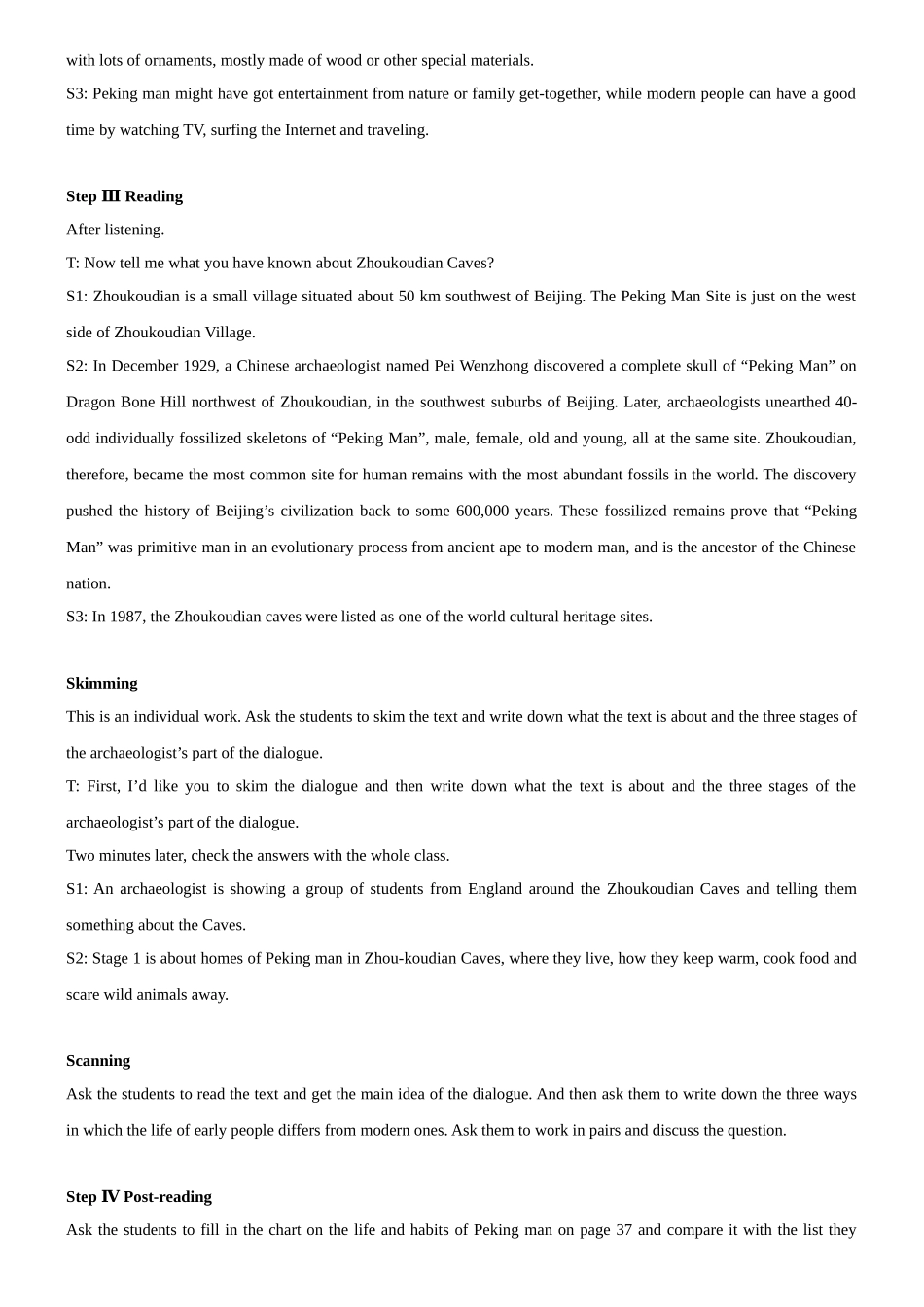Unit 5 Meeting your ancestorsPeriod 1-2 ReadingTeaching goals 1. Target language a. archaeology, tentative, accuracy, excavate, interrupt, ornament, assume, regardless, sharpen, cut up, scrape, ample, primitive, preserve, bead, botany, botanical, analysis, specific, seashell, specificallyb. I’m sorry to interrupt you but how could they live here? We have been excavating layers of ash almost six meters thick, which suggests that they might have kept the fire burning all winter. Yes, indeed, as the botanical analyses have shown us, all the fields around here used to be part of a large shallow lake. That’s why they are called hunters and gatherers. 2. Ability goals Enable the students to tell the differences between modern people and Peking man and learn how Peking man lived their lives.3. Learning ability goals Help the students learn how to tell the differences between modern people and Peking man and learn how Peking man lived their lives.Step Ⅰ RevisionCheck the homework. The students will show their information about Zhoukoudian Caves in the following steps.Step Ⅱ Lead-inT: In the last period, we learned about the life of ancient Egypt. But what about the life of ancient Chinese? Look at the picture on page 37, and guess what it is.S: It is a skullcap.T: Can you guess whose skullcap it may be?S: Peking man’s skullcap.T: Yes, you are right. Now you are given 3 minutes to discuss and imagine what Peking Man might have done and used thousands of years ago. Then compare it with the life of modern people.3 minutes later.S1: Peking Man might have lived in caves of rocks and trees, while modern people live in modern buildings which are huge, like boxes with flat roofs, sharp corners and ...


